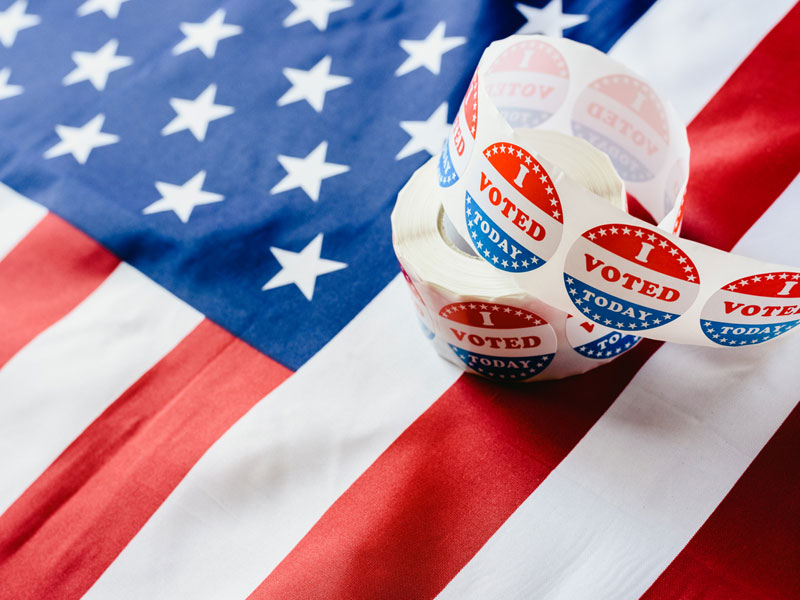
Trade tariffs proposed by former president and U.S. presidential candidate Donald Trump represent a significant risk for the Canadian economy, according to a pair of bank economists.
In an interview with Investment Executive, Sal Guatieri, senior economist and director with BMO Capital Markets, said the bank is concerned about the harm Trump’s trade proposals could do to the global economy and “a possible trade war” between the U.S. and Canada. Investors usually embrace GOP victories due to the party’s pro-business policies. But those would likely be offset by the longer-term impact of protectionist trade measures.
(Democratic presidential nominee and Vice-President Kamala Harris has made no new tariff proposals nor committed to ending tariffs implemented during the first Trump presidency and maintained by President Joe Biden.)
Trump has proposed a trade tariff of 10% to 20% on all imports to the U.S., a 60% import tax on goods manufactured in China and — at a rally in Georgia earlier this month — a 200% tariff on cars and trucks made in Mexico.
“We’re not letting those cars come into the United States,” Trump said.
Such a move could threaten the Canada-United States-Mexico Agreement (CUSMA), in effect since July 2020, given the trade deal allows any member country to pull out with six months’ notice. The CUSMA, which replaced the North American Free Trade Agreement, eliminated tariffs on better than 99% of Canadian goods sold across the continent. The pact has boosted North American trade by 47%, according to the Canadian Chamber of Commerce.
Marc Ercolao, an economist with TD Economics, said he’s optimistic that the CUSMA will hold together. “If you look at Trump’s first term as president, back in 2016 to 2020, we saw sort of the same thing: a bunch of promises from the Republicans to move forward with tariffs that ultimately didn’t end up getting imposed.”
Ercolao isn’t ruling out tariffs, though, noting that they have the potential to “shake up global trade.… Ultimately, I think that a middle ground would be found between Canada, the U.S. and Mexico.”
The CUSMA was negotiated during Trump’s first presidency, which could make the former president open to a bit of horse trading if he’s elected again. “He’ll probably look to negotiate,” Ercolao said.
According to the agreement’s review clause, the three parties are due to confirm their renewed commitment on July 1, 2026. That renewal could trigger tough negotiations, no matter who occupies the White House. “[Harris] was one of the 10 senators who was against signing the [CUSMA] back in 2020,” Ercolao said. “So, we don’t think negotiating with her would be any easier than it would be with Trump.”
Regardless of the outlook for the CUSMA, Trump’s trade policy proposals in the run-up to next week’s election could have a dramatic effect on the Canadian and global economies. If the U.S. were to implement a 10% tariff on Canadian exports, Ottawa could retaliate. TD Economics said that combination of events could produce a 2.4 percentage-point drop in Canada’s gross domestic product (GDP) growth rate over two years, relative to current baseline projections.
But that projection is a “worst-case scenario,” Ercolao said. “We think cooler minds will prevail.”
Canadian investors should also be wary of both parties’ election promises and their impacts on U.S. federal debt. A forecast produced by BMO Economics with Haver Analytics and Washington D.C.–based nonprofit Committee for a Responsible Federal Budget estimated that a Harris presidency would grow the U.S. federal government’s debt to 133% of GDP by 2035. A second Trump presidency would deliver an estimated debt load of 142% of GDP by that year. The ratio is currently 124%.
According to the Penn Wharton Budget Model, a nonpartisan research initiative, the U.S. debt risks becoming unsustainable at 175% to 200% of GDP. Beyond that range, global investors could see a U.S. default or runaway inflation triggered by the Federal Reserve’s efforts to monetize the government debt. Guatieri said that’s unlikely, barring a crisis or significant recession.
“We know from history that the debt ratio can rise pretty dramatically during downturns or crises,” said Guatieri. It hit a record high of 126.3% following the financial crisis in 2020 arising from the pandemic, according to the Office of Management and Budget, which oversees the performance of U.S. federal agencies.
In a note to investors, Guatieri outlined two additional scenarios. If the Democrats win the executive branch but fail to take both houses of Congress, the impact on markets would be muted. If Trump were elected without the full support of Congress, he could implement trade protections without approvals from the House of Representatives and the Senate.
Guatieri also noted that no matter which party controls the House of Representatives and Senate, temporary measures enacted as part of the Tax Cuts and Jobs Act of 2017 will likely be extended past their 2025 end date. That includes the higher standard tax deduction and elimination of personal exemptions, lower marginal tax rates, the $10,000 limit on state and local tax deductions and the increased child tax credit.